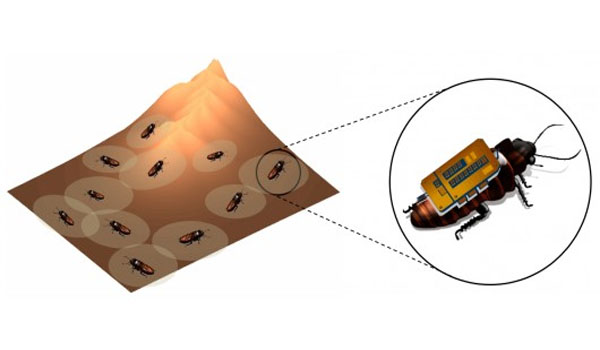
New software could allow cyborg insects to map buildings
Truther
Living remote-control cockroaches are now a thing. They actually exist. Besides wowing people and sparking ethics debates, however, the cyborg insects may ultimately have some very worthwhile applications. A team led by North Carolina State University’s Dr. Edgar Lobaton has brought one of those applications a step closer to reality, by developing software that would allow “swarms” of the cockroaches to map hazardous environments such as collapsed buildings.
The cockroach-guiding technology, which was also developed at NC State, involves fitting Madagascar hissing cockroaches with “backpacks” containing an inexpensive, lightweight, commercially-available chip, along with a wireless receiver and transmitter, and a microcontroller.
That microcontroller is wired into the cockroach’s antennae and sensory organs known as the cerci. When commands are sent wirelessly by a remote human operator, the controller electrically stimulates one or more of the antennae and/or cerci, dictating the directional movements of the insects.
In the building exploration scenario, a swarm of sensor-wearing remote-control cockroaches or other insects – known collectively as “biobots” – would be released into a damaged structure. Their human operators would give them some time to disperse in a random pattern, and would then send a signal causing the biobots to proceed to the nearest wall and follow along its base.
Although the locations of individual insects wouldn’t be known (GPS doesn’t work indoors), the insects’ sensors would send a radio signal to the operators whenever two or more of the biobots got close to one another. After several swarms had been released and performed the “wall following” behavior, an algorithm in the software would take all of the accumulated radio signal data and use it to create a rough map of the building’s interior.
First responders would then have some idea of where to go and what to avoid upon entering the structure themselves.
The technology has already been tested using computer simulations, and testing with robots is now under way (perhaps not unlike the existing MAST system). A trial involving actual biobots is planned to take place soon.
Down the road, it is hoped that insects equipped with other types of sensors could also be used to map the location of radioactive or chemical threats.
Sources
North Carolina State University

